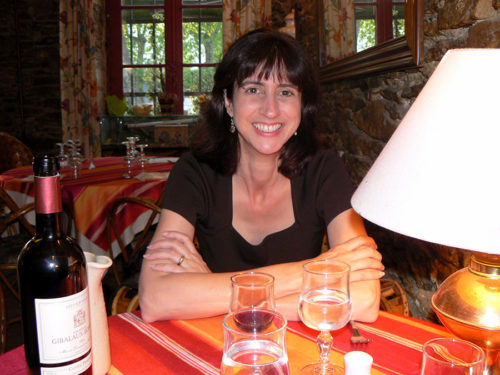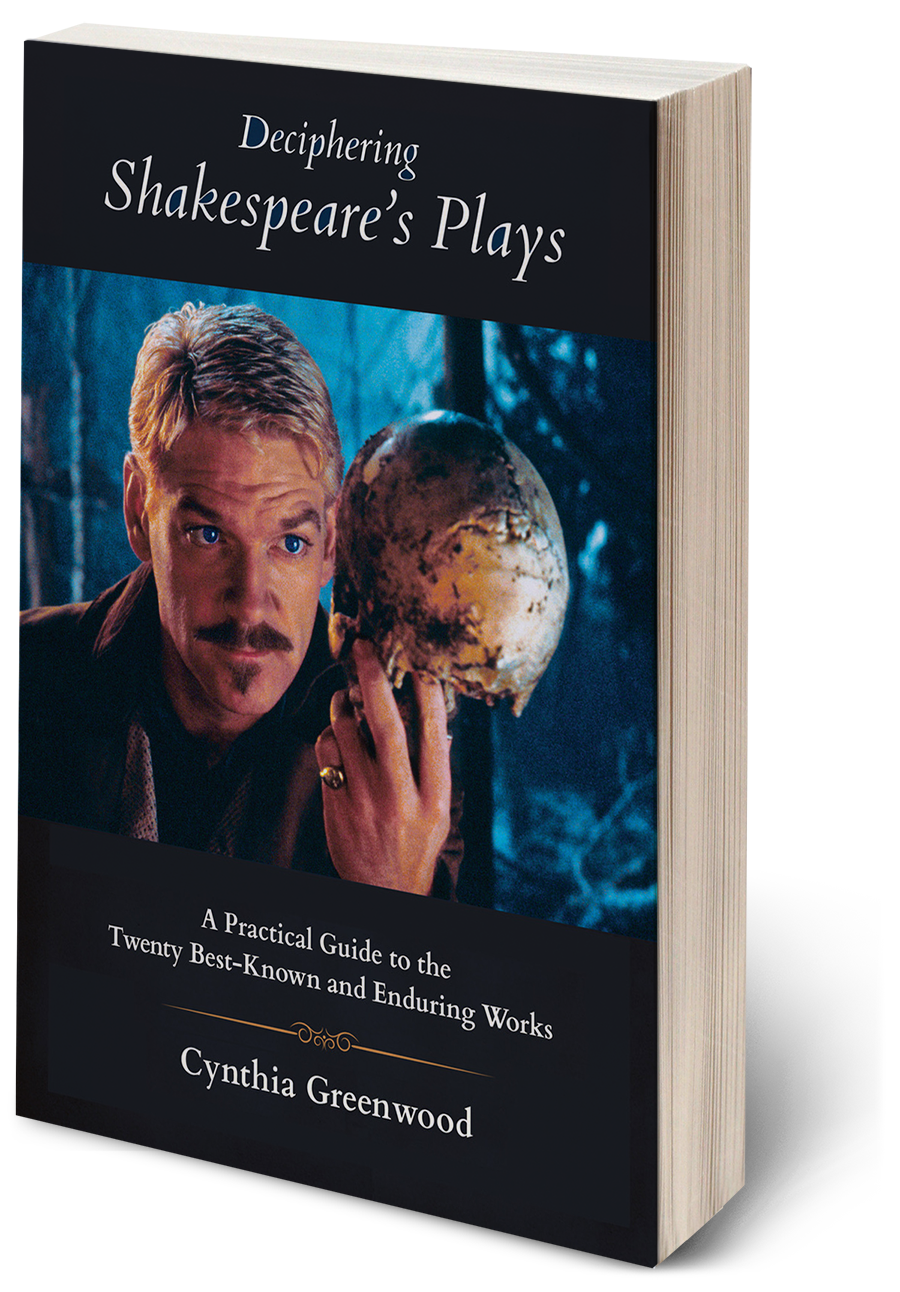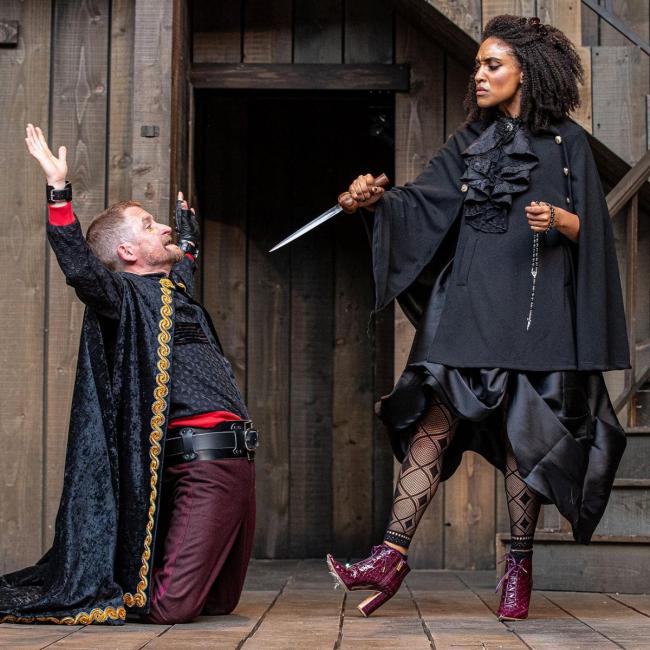
Today only the watery foundations of the Elizabethan Rose theatre’s 14-sided timber structure are still standing on London’s Bankside (south of the Thames River), located about 100 meters from the new Globe theatre. The Rose Playhouse, built in 1587, housed the acting troupe known as the Admiral’s Men and their legendary Christopher Marlowe interpreter, Edward Alleyn.
Recently the producers of Shakespeare’s Rose Theatre decided to allow playgoers to experience the intimacy of a Shakespeare play within the Rose playhouse. So they created a four-play repertory that could be performed inside two temporary structures that bear a striking resemblance to the Rose’s thatched roof and timber structure. These two Rose theatre facsimiles are notable for being open to the sun and rain, just like Alleyn’s playhouse.
Following a successful summer repertory in 2018, Shakespeare’s Rose Theatre presented Richard III and three other Shakespeare plays this past summer within pop-up temporary playhouses. Built in only three weeks, one facsimile was erected in York near Clifford’s Tower, and another was built on the grounds of Blenheim Palace in Oxfordshire, the birthplace of Winston Churchill and the principal residence of his ancestors, the Dukes of Marlborough.
Both Rose theatre facsimiles are designed to seat 900 people on three-tiered balconies that surround an open-roofed courtyard. Standing room is available for 350 ‘groundlings’, a feature that apes the original Rose Playhouse design. Theatre historians credit the commercially successful Rose for influencing the construction of other purpose-built playhouses that enticed Londoners to leave work early and enjoy a novel form of afternoon recreation.
I watched the final performance of Richard III on September 6, 2019, inside the Rose theatre at Blenheim Palace. Even from the covered mid-tier balcony, I felt the full effect of the cool, blustery day in early fall. Rain drizzled upon the dozen groundlings standing and sitting just beneath the stage. (Umbrellas are prohibited inside.)
This chilly setting provided an ideal context for a tale about a Machiavellian villain who leaves a trail of dead bodies in his zeal to seize the English throne. Shakespeare ensured the posterity of his popular history play because his title character, Richard, Duke of Gloucester, makes no secret of his raw political ambition. He revels in having secret conversations with his spectators. This private connection builds through a series of blackly humorous asides, beginning with the protagonist’s dark opening soliloquy: “Now is the winter of our discontent/Made glorious summer by this sun of York.”
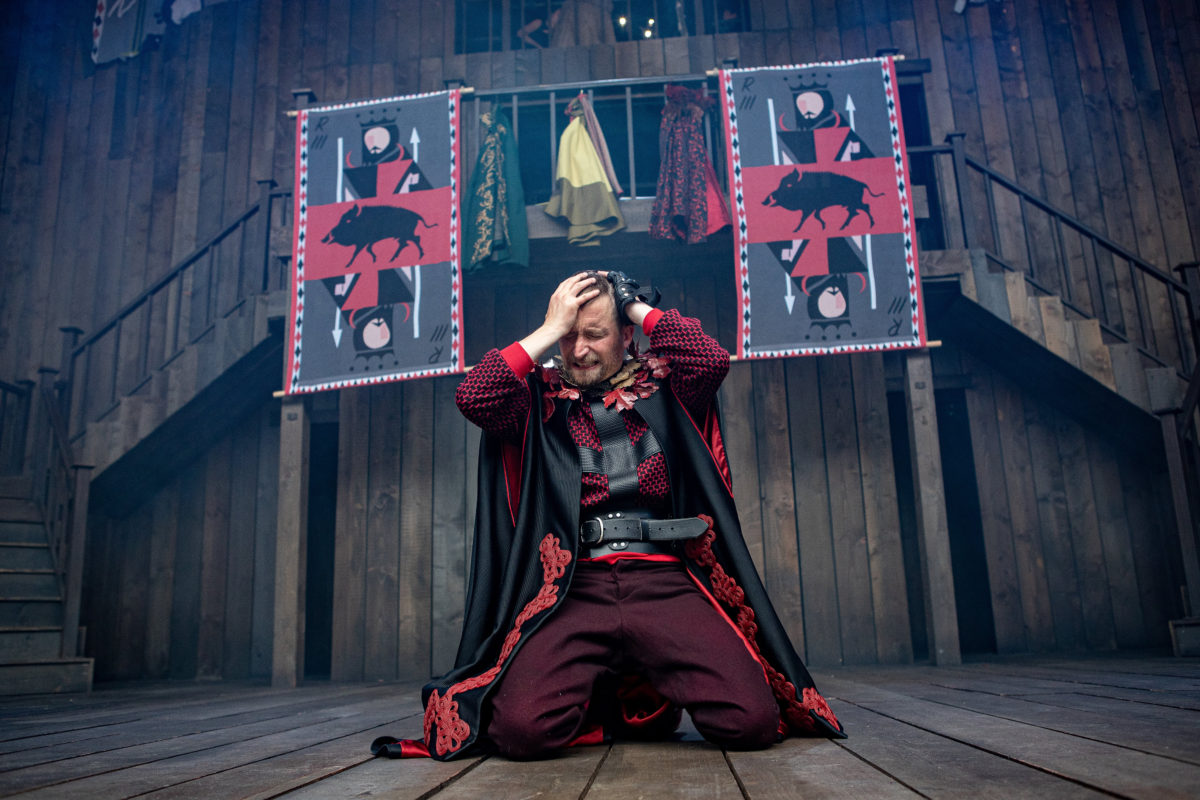
Through an impressive use of doubling, tripling, and quadrupling of roles, the 19-person troupe handled more than 50 characters conceived by Shakespeare. The company also cast female actors effectively in traditionally male roles. Ella Dunlop gives a notable performance as Earl Rivers, Queen Elizabeth’s brother. Anna Northam excelled in the dastardly role of Sir William Catesby, a supporter of Richard. Doireann May White stood out as Lord Hastings, and Nicola Sanderson performed well in the role of Lord Stanley, the Earl of Derby. (Both Hastings and Derby stood on the fence politically.)
Bonnie Baddoo met the unique demands of the role of Lady Anne, the grieving widow of Edward, Prince of Wales. Her character must be seen to put aside her hatred of Richard, and succumb to his charms in a plausible way before she becomes his wife.
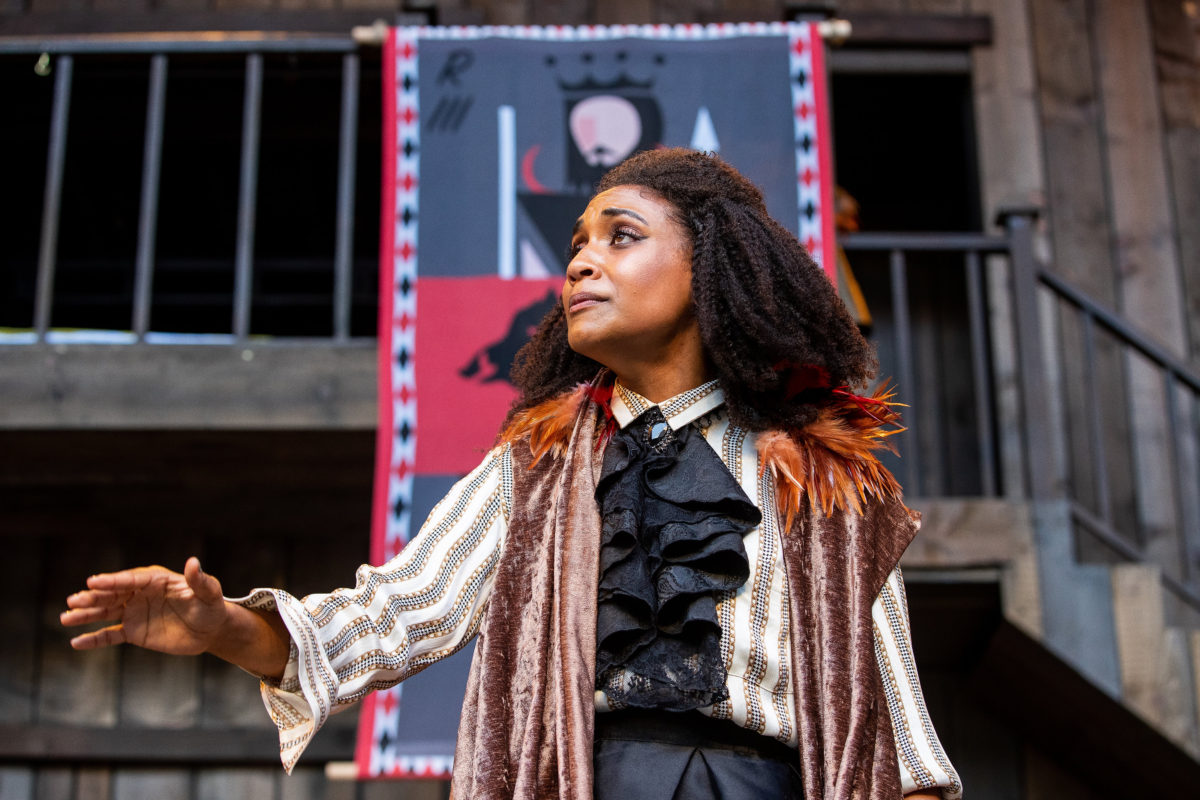
For the most part, actors in the lead roles offered substantive performances in the show’s first half. But as Richard’s victims multiply after he becomes king, the overall direction of this production suffered as certain principal actors lost their sense of dramatic nuance.
Actor William Mannering portrayed Richard’s deformity by walking with a crutch instead of displaying a serious hunchback as Shakespeare intended. Nevertheless, Mannering handled this handicap effectively onstage, but his portrayal of Richard lost its subtlety during the play’s second half. During highly charged moments Mannering appeared overwrought and screamed many of his lines, a practice that should never be required in a theatre as physically intimate as the Rose, where all viewers could easily hear the verse.
From the outset, Anna Ryan appeared solid as Elizabeth, who is King Edward IV’s queen as the play opens. But as the influence of Elizabeth’s powerful Lancastrian family waned alongside Richard’s increased power, Ryan’s frequent laments became less carefully modulated, detracting from her well rounded performance during early scenes.
By contrast, actor Damien Matthews offered an exceptionally nuanced rendition of the Duke of Buckingham, Richard’s most loyal supporter. Matthews mastered the many faces of Buckingham, who must appear to be an unscrupulous noble, a loyal henchman, and ultimately, one who questions his allegiance to Richard and turns the tide against the evil usurper.
The Shakespeare’s Rose Theatre’s production of Richard III at Blenheim Palace was an occasionally flawed, but highly atmospheric recreation of Shakespeare’s earliest history play. Perhaps the architectural space of the Rose deserves the greatest credit of all for enhancing the intimacy between players and spectators.
For me, and no doubt for other palace tourists, the process of seeing the room where Churchill was born, absorbing his legacy as an ingenious statesman, and then feasting on the shocking antics of Shakespeare’s diabolical king proved to be nothing if not ironic. What could be more historically enriching than absorbing Shakespeare’s mythical take on King Richard III outside the grandeur of Blenheim Palace?
This review originally appeared on PlayShakespeare.com.
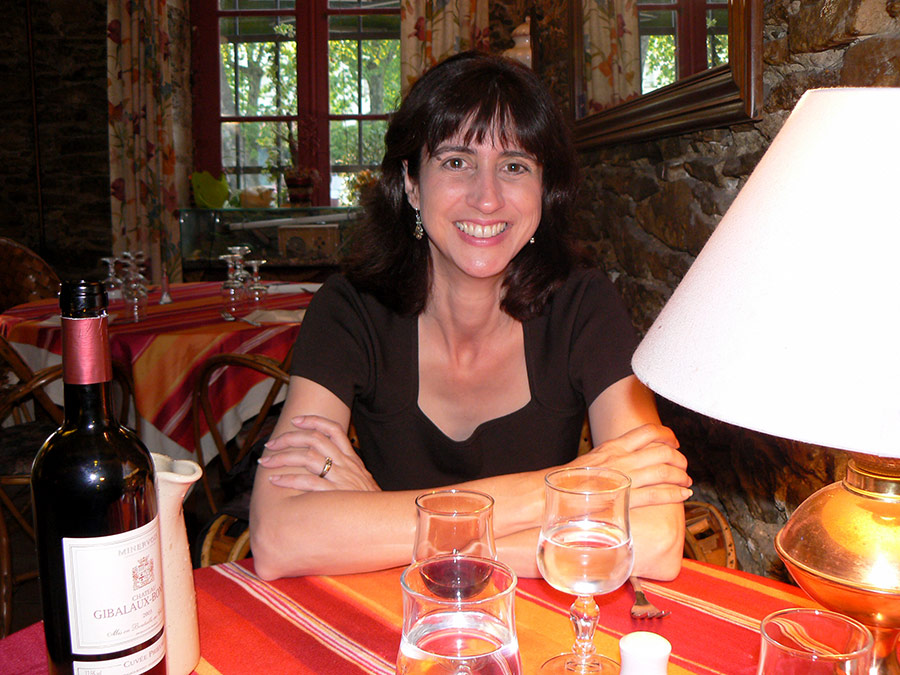
Consider me a professional interpreter of William Shakespeare for intelligent readers who never warmed up to the world’s greatest playwright in high school or college. I delight in helping modern readers and audiences translate iconic texts, especially antiquated dramatic works that were meant to be experienced inside the theatre.
